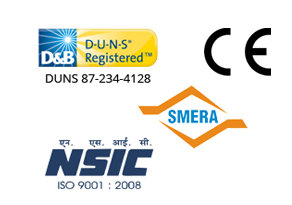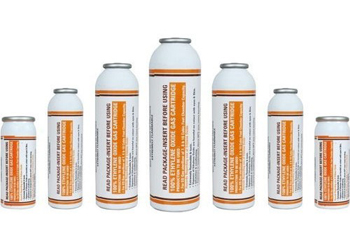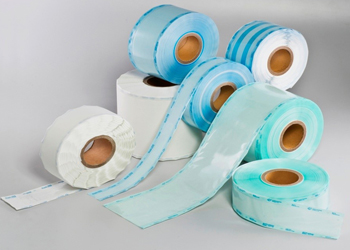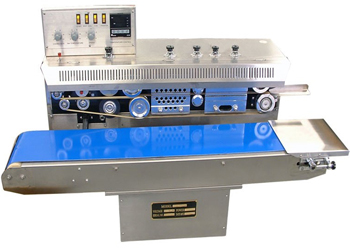The cosmetic industry continually evolves to meet both aesthetic expectations and stringent hygiene standards. With consumers becoming increasingly conscious of the cleanliness and safety of the products they use, manufacturers must employ advanced sterilization methods to ensure product integrity. One such method, ETO sterilization, is rapidly gaining traction. Known for its effectiveness in medical device sterilisation, this technique now finds valuable application in cosmetics, where heat-sensitive and intricately designed tools dominate production lines.
As hygiene becomes a non-negotiable aspect of product development, ETO sterilizers offer a solution that ensures microbial decontamination while maintaining product quality and performance. The growing presence of ethylene oxide sterilizers in cosmetic labs and production facilities reflects this shift in industry standards.
What is ETO Sterilization and How Does it Work?
This eto gas disrupts microbial DNA and effectively eliminates bacteria, spores and fungi. Unlike steam sterilization, which uses high temperatures, ETO sterilization operates at controlled low temperatures, preserving sensitive cosmetic items such as plastic applicators, latex-based tools and silicon containers.
The process occurs inside a specially designed sterilization chamber. The cycle progresses through four automated phases:
- Vacuuming – Air is evacuated to allow gas penetration.
- Gas Exposure – Ethylene oxide enters the chamber for microbial inactivation.
- Sterilizing Phase – The environment is held under specific humidity and temperature for optimal efficacy.
- Aeration – Residual gas is safely removed to make the product ready for handling.
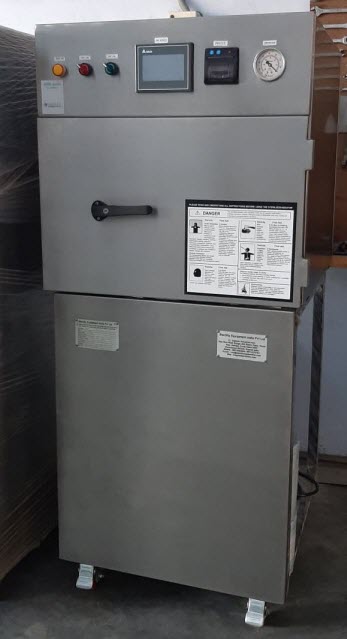
Modern sterilizing machines feature automated control panels that guide users through each phase. This automation minimizes human error and ensures standardized results across all production batches.
Why the Cosmetic Industry Adopts ETO Sterilizers?
ETO sterilization’s compatibility with sensitive and complex materials makes it uniquely suited for the cosmetic sector. Many tools and components used in cosmetics – such as sponge blenders, eyelash curlers and jars – cannot withstand steam or dry heat. ETO sterilizers accommodate these limitations by using a gentle, gaseous approach.
Additionally, the demand for medical-grade sterilisation of cosmetic industry rises as consumers seek safer, skin-friendly products. Sterility in cosmetic products not only enhances safety but also extends shelf life, boosts brand credibility and aligns with regulatory expectations.
ETO sterilization is particularly useful for:
- Precision tools with intricate designs.
- Electronic cosmetic devices that are heat-sensitive.
- Multi-layer packaging that resists traditional methods.
By using ethylene oxide chambers, cosmetic manufacturers maintain consistency in hygiene without compromising design or function.
Key Features of ETO Sterilizers Used in Cosmetics
Today’s ETO sterilizing machines are equipped with intelligent safety systems and structural enhancements to suit industrial cosmetic applications:
- Automatic Cycle Progression: The sterilization process, from vacuuming to aeration, proceeds without manual intervention.
- Real-Time Phase Display: Control screens indicate ongoing sterilization stages.
- Negative Pressure Chambers: These prevent gas leakage into surrounding workspaces.
- Leak Detection System: Pre-cycle checks ensure there are no chamber leaks.
- Chamber Composition: High-quality stainless steel resists corrosion and supports hygienic cleaning routines.
- Post-Cycle Aeration Systems: These ensure all residual ethylene oxide is expelled, protecting end users and operators alike.
Such features demonstrate that e t o sterilization not only perform efficiently but also prioritize operator and product safety in high-volume cosmetic environments.
How ETO Sterilization Supports Hygiene Standards?
The cosmetic industry now faces increasing scrutiny from health regulators and informed consumers. Items used for personal care – whether in salons, clinics or at home – must meet medical sterilization benchmarks. ETO sterilization allows manufacturers to meet these benchmarks through reliable, repeatable processes.
This method aligns with international regulatory and contributes to:
- Reducing microbial load.
- Minimizing cross-contamination risks.
- Ensuring batch sterility for exports.
- Improving consumer confidence through traceable hygiene records.
By leveraging e.t.o sterilization, companies gain a competitive edge and demonstrate compliance with both domestic and global hygiene mandates.
Application Areas in Cosmetics and Personal Care
Fully automatic ETO sterilizers play an integral role in sterilizing a wide range of cosmetic and personal care products:
- Reusable makeup tools (brushes, blenders)
- Packaging materials (pumps, tubes, caps)
- Spa accessories (rollers, tweezers)
- Skincare gadgets (micro-needling pens, LED masks)
The method ensures every layer of packaging and component of the product is free from microbial risks without requiring post-sterilization processing that could affect usability.
Safety and Handling in Ethylene Oxide Sterilization
Despite its benefits, ethylene oxide is a toxic, flammable gas. As such, ETO sterilization chambers must integrate several safety measures:
- Controlled environment to contain and recycle gas.
- Monitoring sensors for gas concentration.
- Emergency shut-off mechanisms.
- Operator training for safe handling.
These protocols prevent workplace exposure and guarantee environmental compliance, making the technology viable for high-throughput cosmetic production settings.
Conclusion
ETO sterilization stands at the forefront of hygiene innovation in the cosmetic industry. Its ability to sterilize intricate, heat-sensitive tools while maintaining product integrity addresses a pressing need in modern cosmetic manufacturing. From ensuring the sterility of reusable tools to upholding the integrity of sophisticated skincare devices, ETO sterilizers enable manufacturers to meet rising hygiene standards and consumer expectations with precision.
As hygiene demands continue to rise, ethylene oxide gas sterilization is no longer an option but a necessity for cosmetic brands aiming for excellence in safety and quality.

